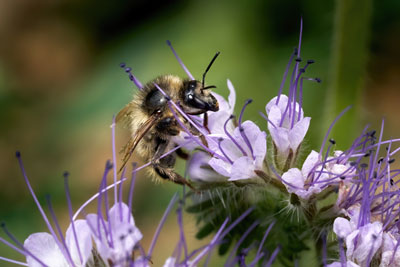Planting cover crops is a centuries-old farming practice that has stood the test of time.
After months of growing and tending to your vegetable crops, it’s usually time to rest in the off season. Many people would not consider planting extra crops, especially ones that are not typically consumed, as a means of enhancing soil quality. Nonetheless, sowing a cover crop is a simple and affordable approach to restoring and improving soil health.
Improve Soil Structure
Cover crops can help improve soil structure and compaction by raising the soil’s organic matter levels and improving its physical properties. By depositing minerals and capturing nutrients, cover crops help utilize them for the next crop—which will be your next summer’s tomatoes and corn! On hillsides and other areas that may need it, cover crops protect the soil surface from erosion and improve water infiltration.
Types of Cover Crops & Their Functions
Type 1
Let’s understand what a cover crop actually is. The term “cover crop” names a type of plant you can grow in your garden to cover the soil rather than for harvesting. There are many different types of cover crops that each have their own benefits and drawbacks. For example, Crimson Clover, like many other legumes, forms a symbiotic relationship with soil bacteria that allows it to fix nitrogen in the soil. This process of nitrogen fixation is crucial for farmers’ and gardeners’ wallets, as well as your next crop of vegetables, as it enables the increase of nitrogen levels near the soil surface without relying on fertilizers or other soil additives. Because it is a flowering crop, Crimson Clover will also bring beneficial insects to your garden when you need them in early spring.

Type 2
Another great cover crop choice is Buckwheat. As a fast-growing, short-season cover crop, it matures, blooms, and is ready for incorporation in 35 to 40 days, breaking down quickly. Buckwheat is another beneficial crop that can suppress weed growth while attracting pollinators and beneficial insects with its copious blooms. It is also relatively easy to terminate, and has been reported to extract soil phosphorus more effectively than many other grain cover crops. Buckwheat flourishes in cool, damp conditions, although it is not tolerant to frost. Buckwheat does not have significant drought tolerance and is susceptible to wilting under hot, dry conditions.

Type 3
Lacy phacelia is effective as another rotational cover crop or short period catch crop. The seedlings are vigorous, competing strongly with weeds. The plant is increasingly used as a component of cover crop mixes to increase diversity. Soil organic matter is improved, especially when lacy phacelia is used as a mix component along with grasses with fibrous root systems. Lacy phacelia concentrates nitrogen from the soil into the foliage, enabling rapid decomposition after the plant dies, making nitrogen rapidly available for the successive crop. As a bonus, lacy phacelia is listed in the top 20 pollen producing flowers for honeybees and is highly attractive to pollinator insects including bumblebees. It provides a source of high quality nectar and pollen.

By direct competition and shading the soil, cover crops can also suppress weeds, which sounds like music to a gardener’s ears! In larger installations, you can also use cover crops as a companion to the primary crop by growing between rows, and will help out-compete the weeds. Over time, a living cover crop, along with earthworms, can not only keep weeds at bay, but will also change the soil structure on your plot of land.
Harvesting Cover Crops
Beyond its weed-suppressing qualities, a cover crop can be “harvested” in a variety of methods. The first technique is called “chop and drop.” Simply take a cutting tool such as a large pair of shears or a string trimmer, and chop the cover crop down, leaving it to fall onto the soil. You may then leave it there to act as mulch, or you may bury it beneath a layer of compost or soil. Alternatively, you can opt for the “chop, drop, and regrow” method, where you cut only the top part of the plants, allowing the remainder to regrow for a second harvest.
The second method involves tilling the cover crop directly into the soil, which is common in both agricultural and gardening settings. You can use a hoe, tiller, or other digging tools to till the plants into the top layer of soil, where they will quickly break down and add nutrient-rich organic matter.
Finally, the third method is similar to the chop and drop technique, but instead of leaving the cuttings on the surface of the soil, you can add them to your compost bin. This method has the advantage of keeping debris out of the garden, and the compost bin can break down the cuttings into compost more rapidly than if they were left in the ground.
Additional Reasons to Grow Cover Crops
Planting cover crops is a centuries-old farming practice that has stood the test of time. Since its inception in the Roman Empire, it has been widely adopted in agriculture and proven to be immensely beneficial. Cover crops offer farmers a wide range of advantages that cater to various objectives in the short and long term.
Cover crops prevent soil erosion and regulate moisture, attract pollinators and aid in weed and pest management. In addition, cover crops can serve as a source of mulch, green manure, and organic matter, as well as provide grazing or forage for livestock on larger farms. Depending on the type of cover crop used, they can either add or absorb nitrogen from the soil. The benefits of cover crops far outweigh any possible drawbacks, and although it may not be the most exciting aspect of gardening, cover crops play a crucial role.